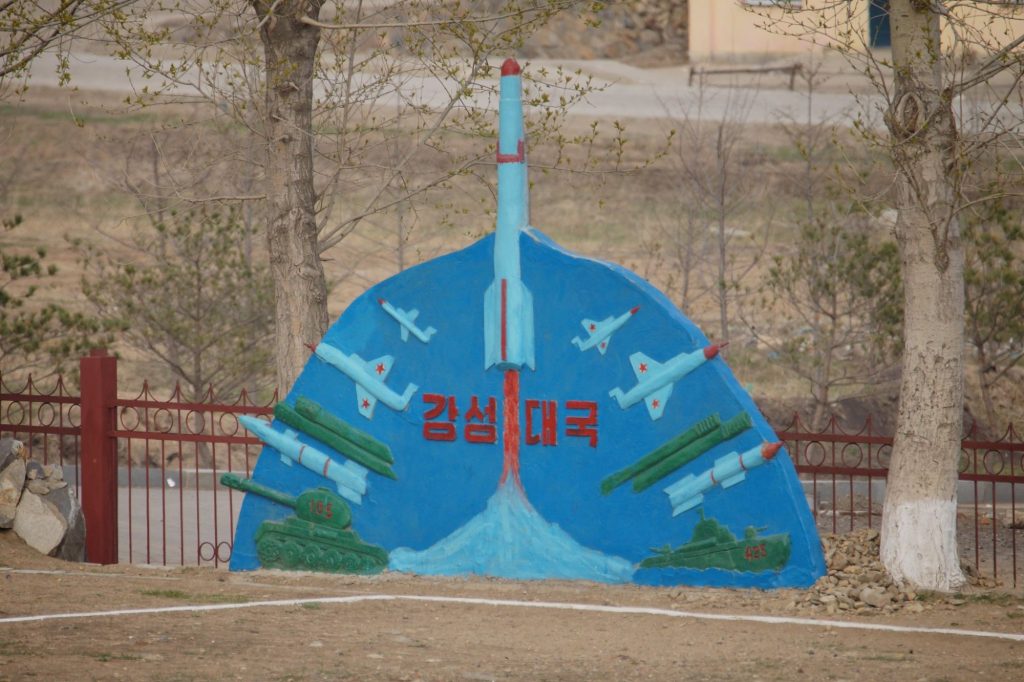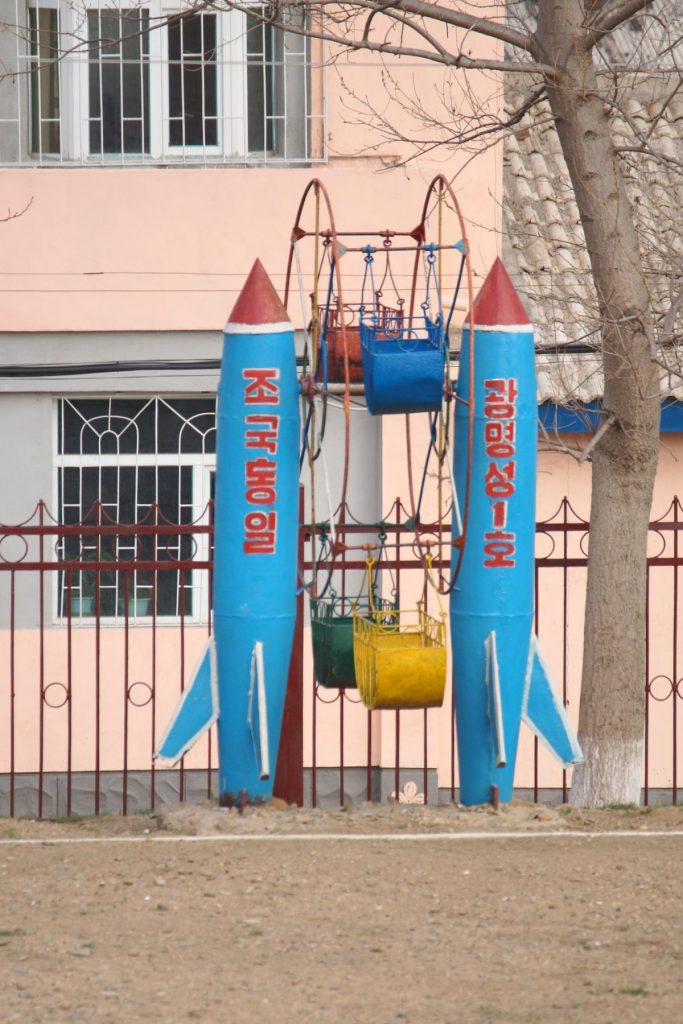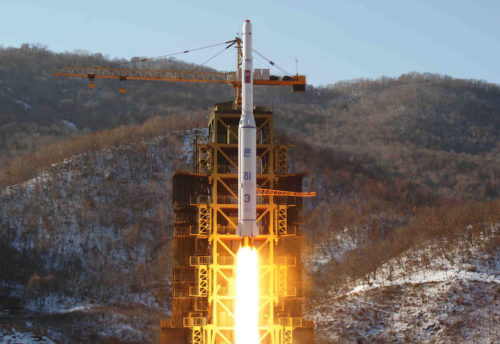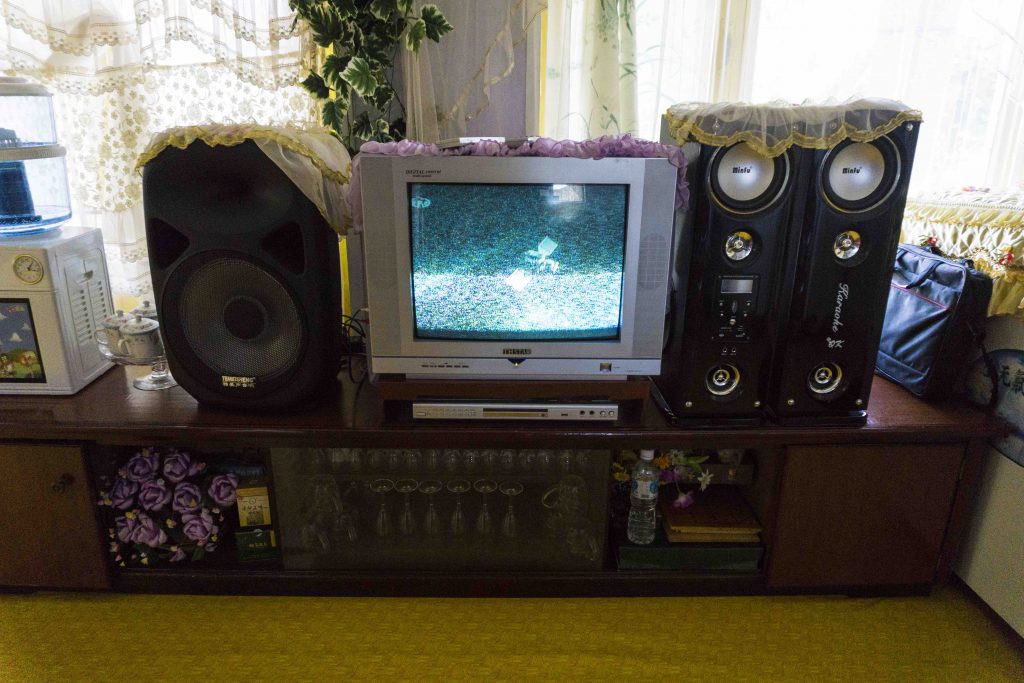Amused by the NASA-esque logo of the North Korea’s space program, the National Aerospace Development Administration (NADA), and under the assumption that its space program is a cover for its weapons program, North Korea observers often overlook the fact that the DPRK is one of only 10 countries to have sent objects into space utilising its own launch vehicle.

On a trip to the DPRK with Young Pioneer Tours’ Real Deal Tour in October, 2016, I was surprised to see tributes to the space program everywhere from bus stops in the nation’s capital, Pyongyang, to elementary schools in the DPRK’s most northern province, North Hamgyong. While touring the Pyongyang International Football School, I was struck by the inclusion in a science display of an illustration of a North Korean astronaut. Elsewhere in the world, it is common for kids to say that they want to be astronauts when they are older. Such a statement from a North Korean child would most likely not be taken seriously, but that astronaut illustration made me wonder: is a North Korean youngster dreaming to reach for the (red-pointed) stars really that far-fetched?
The display at Pyongyang International Football School featuring the North Korean astronaut. The quote in pink, attributed to Kim Jong Un, says “Today’s age is the era of discovering science and technology.”
Last month, an article from the DPRK’s state-run news agency, The Korean Central News Agency (KCNA), declared that “nothing can check the DPRK from conquering outer space” and that it will do so in order to “provide people with more civilized and abundant material and cultural life” and will “continue launching satellites for a peaceful purpose and emerge a space power to be envied by the world.” For now, visitors to Pyongyang can envy the DPRK’s space program at the retro Three Revolutions’ Exhibition, which features displays, models and computer animations commemorating the country’s satellite launches.


A rendering of Uhna-3 carrying Kwangmyongsong 4 into orbit next to two of the Seven Dwarves at Kim Chaek Steel Complex Kindergarten in Chongjin.
The DPRK’s space program has been analyzed and discussed by experts far more knowledgeable than me, but let us examine the question of the North Korean astronaut in layman’s terms.
A Brief History of the DPRK’s Space Program
The DPRK’s space program began in the 1980’s with the creation of the Korean Committee for Space Technology (KCST). In the 1990s, North Korean scientists developed an experimental satellite, Kwangmyongsong-1 or “Bright Star” or “Lode Star.” According to the DPRK’s Kim Jong Il Biography 3, when the scientists developing KMS-1 were discouraged, the Chairman reminded them that the first Korean Chollima-brand tractor “had run backwards on its trial drive.” Encouraged, the scientists “drew fresh designs and compiled technical data within a year,” something which would have taken “five years to be completed in ordinary times” and within two years had completed KMS-1’s launch vehicle.
On August 31, 1998, to mark the 50th anniversary of the DPRK’s founding, KMS-1 was launched and the country declared itself a “full-fledged space power.” The DPRK-produced biography of Kim Jong Il, The Great Man, in discussing the development of KMS-1 and 2, even admitted that the fact that the DPRK had launched a satellite at all “can be said to be a miraculous event.”
What was KMS-1’s function? KCNA triumphantly announced that the satellite, which would “contribute to scientific research for using space for peaceful purposes,” was transmitting data on space conditions as well as “the melodies of the ‘Song of General Kim Il Sung,’” the “Song of General Kim Jong Il,” “revolutionary hymns,” and “the words of Juche Korea” in morse code. As KCNA reported that the satellite had completed its 100th orbit of the earth, Western media reported that the rocket had malfunctioned and broke up in its third stage before reaching orbit. Outside of its borders, the DPRK was not yet recognized as a space power.
On March 13, 2009, the DPRK signed the international Outer Space Treaty and the Registration Convention. Less than a month later, on April 5, 2009, the communications satellite Kwangmyongsong-2 was launched. As with KMS-1, the DPRK reported the launch as successful, while Western media reported the satellite as having fallen into the Pacific before reaching orbit.
The Earth observation satellite Kwangmyongsong 3 failed completely on April 13, 2012, and the DPRK quickly followed up with the successful launch of KMS 3-2 on December 12, 2012. Despite international disagreement as to whether the satellite was orbiting normally or tumbling out of control, the DPRK was formally recognized as the 10th nation capable of independently putting satellites into orbit. The timing could not have been better; 2012 marked the 100th birthday of Eternal President Kim Il Sung and it occurred shortly before rival South Korea launched its first satellite, Naro-1, in early 2013.
On April 1, 2013, the DPRK dissolved the Korean Committee for Space Technology and announced the creation of the National Aerospace Development Administration (NADA). The Western media pointed out that NADA’s logo bore a striking resemblance to the US NASA logo, with its dark blue globe and white lettering. The DPRK later explained that the logo’s two “blue-colored rings intercrossing the emblem symbolize satellite orbits.” Looking at the logo, you will undoubtedly notice the Big Dipper above the NADA lettering. This represents the larger constellation of Ursa Major or the “Great Bear,” which incorporates the Big Dipper, and was intended to reflect “the will of the space scientists of the DPRK to glorify…Korea as a space power.”
On February 7, 2016, the DPRK launched – via its new carrier rocket the Uhna-3 – a remote-controlled earth observation satellite, Kwangmyongsong-4, which remains the apogee of its space program thus far. The following day the satellite was reported to have flown over Levi’s Stadium in Santa Clara, California during Superbowl 50. Like KMS 3-2, KMS-4 was reported to feature cameras for still imagery and videos. To date, there has been no independent verification of any signals sent back to North Korea. Astrophysicist at the Harvard-Smithsonian Center Jonathan McDowell told the Associated Press in August 2016: “There’s been no independent evidence that KMS-4 sent data back, but no evidence that it didn’t, either.” It is possible to track KMS-4’s orbit.

Coming back to Earth
Shortly after KMS-4’s launch, Hyon Kwang Il, director of NADA’s scientific research declared that the DPRK’s “aerospace scientists will conquer space and definitely plant the flag of the DPRK on the moon…within 10 years’ time.” A moon mission is far beyond the scope of KMS-4, but this brings us back to the question of whether the rendering of a North Korean astronaut is realistic or a flight of socialist fancy.
In 1957, the Soviets launched Sputnik-1, igniting the space race. Four years later, in 1961, US President John F. Kennedy set the ambitious goal of landing a man on the moon by the end of the decade. As discussed by experts, like the DPRK, a moon mission for America or the USSR at that time was far beyond the capabilities demonstrated by any previous space missions; the US had only accomplished the 15-minute suborbital flight of Alan Shepard aboard Freedom-7, and the USSR had sent Yuri Gagarin for one orbit around the earth on Vostok-1. However, as we know, by the end of the decade the Soviets had sent successful unmanned missions to the moon and, in 1969, American astronaut Neil Armstrong landed on the moon and famously declared, “That’s one small step for man, one giant leap for mankind.”
The consensus by experts appears to be that given the DPRK’s continued progress, the idea of a DPRK-led moon mission is not out of the realm of possibility. However, analysts have pointed out that the US and USSR were able to accomplish such a mission with tests and launches performed far more regularly than have been done by the DPRK, and a sophisticated mission such as one to the moon would require a plethora of additional launches and test missions from which the DPRK could learn.
On September 20, 2016, the DPRK performed a ground test of a “new type high-power engine of a carrier rocket for the geostationary satellite,” rumoured to be the Uhna-9, for which it has expanded its Sohae Satellite Launching Station launch pad. Though Uhna-9 is a long way off from Apollo 11’s Saturn-V, it represents another “small step” toward bringing to life that rendering of the DPRK astronaut and flying him to the moon.

A CGI Mock-Up of KSM-4 on KCTV spotted on a TV set in Mount Chilbo’s Homestay Village.







